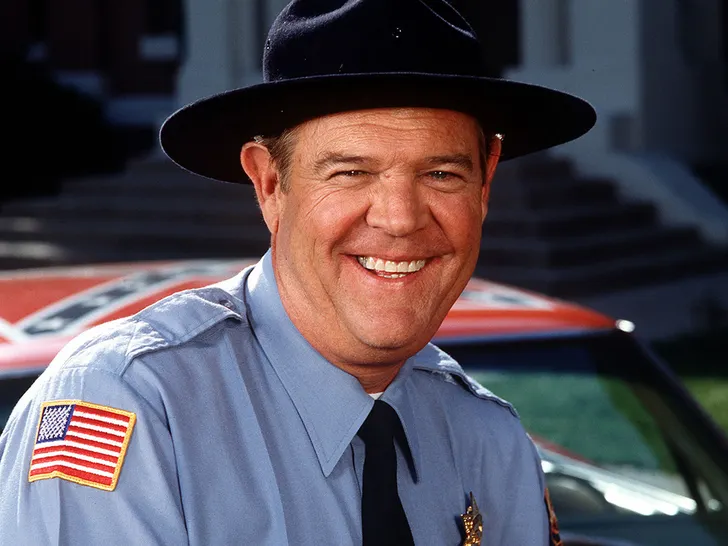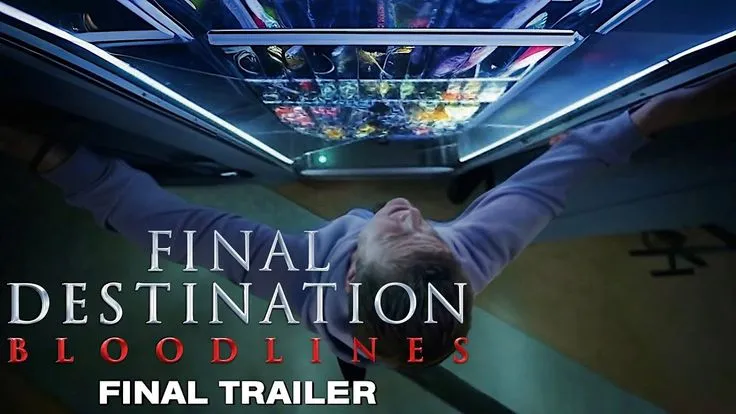Final Destination Bloodlines
Final Destination Bloodlines – Death always finds a way. Since 2000, the Final Destination franchise has captivated horror fans with its unique premise: you can’t cheat death, no matter how hard you try. Now, after more than a decade since the last installment, the notorious franchise returns with its most ambitious entry yet: Final Destination Bloodlines. This new chapter promises to revitalize the series with fresh faces, innovative death sequences, and a deeper exploration of the mythology behind death’s design.
As devoted fans eagerly await this revival and newcomers discover the franchise for the first time, this comprehensive guide will delve into everything we know about Final Destination Bloodlines – from its development and plot details to its connection with previous installments and what makes this particular entry stand out in the horror landscape of 2025.
WATCH THE LATEST MOVIES INCLUDING FINAL DESTINATION BLOODLINES AT THE LOWEST PRICES HERE
The Legacy of Final Destination: Understanding the Franchise
A Brief History of Cheating Death
The Final Destination franchise began in 2000 with the original film directed by James Wong. The concept was revolutionary in the horror genre – instead of featuring a masked killer or supernatural entity, the antagonist was death itself, an invisible force working through elaborate coincidences and accidents to claim those who escaped their predetermined fate.
The franchise spans five previous films:
- Final Destination (2000)
- Final Destination 2 (2003)
- Final Destination 3 (2006)
- The Final Destination (2009)
- Final Destination 5 (2011)
Collectively, these films have grossed over $650 million worldwide, establishing the series as one of the most successful horror franchises in cinema history. What set Final Destination apart from other horror series was its ingenious premise and the creative, often shocking death sequences that became increasingly elaborate with each installment.
The Final Destination Formula
Each Final Destination film follows a similar pattern:
- A character experiences a premonition of a catastrophic event
- They save themselves and several others from death
- Death, displeased with this disruption to its design, hunts down the survivors in the exact order they would have died in the original disaster
- The survivors desperately try to find a way to break the cycle
This winning formula has proven remarkably durable, allowing filmmakers to create new scenarios while maintaining the core appeal that draws audiences to the franchise.
Final Destination Bloodlines: Breaking New Ground
Development History
After Final Destination 5 in 2011, the franchise went dormant for over a decade. Despite the fifth installment being well-received by critics and fans alike, New Line Cinema chose to pause the series. However, in 2019, Warner Bros. announced that a reboot was in development with Patrick Melton and Marcus Dunstan (writers of several Saw films) attached to pen the screenplay.
The COVID-19 pandemic delayed production plans, but in 2023, the project gained serious momentum when the studio confirmed the title Final Destination Bloodlines and announced the attachment of a visionary director known for innovative horror films. Production began in early 2024, with a talented ensemble cast of both established actors and promising newcomers.
Plot and Premise: A New Vision for Death’s Design
Final Destination Bloodlines introduces a compelling twist to the established formula. While previous installments focused on isolated incidents affecting strangers who happened to be in the wrong place at the wrong time, Bloodlines centers on a family with a generational connection to death’s design.
The film follows the Martinez family, who have experienced mysterious, untimely deaths across multiple generations. When 25-year-old Elisa Martinez (played by rising star Ana Villafañe) experiences a premonition of a catastrophic subway derailment, she saves her family members and several strangers. However, as death begins stalking the survivors, Elisa discovers shocking family secrets – her grandmother survived a similar incident decades ago, suggesting that death’s design may actually follow bloodlines across generations.
This fresh angle allows Bloodlines to explore deeper mythology about how death’s design works, potentially answering questions fans have pondered since the original film. The generational aspect also permits exploration of themes like inheritance, family curses, and the impact of past actions on future generations – adding psychological depth to the signature spectacle.
Cast and Characters: Fresh Faces Meet Veteran Performers
The New Generation
Final Destination Bloodlines features an impressive ensemble cast representing diverse backgrounds and experiences:
- Ana Villafañe as Elisa Martinez, a graduate student studying mortality myths across cultures, whose premonition saves her family from disaster
- LaKeith Stanfield as Marcus Reynolds, a subway engineer who becomes an unlikely ally to Elisa
- Thomasin McKenzie as Diana Lynch, a passenger with her own mysterious connection to death’s design
- Kelvin Harrison Jr. as Tyler Brooks, Elisa’s skeptical boyfriend who struggles to believe the supernatural threat
- Isabella Merced as Lucia Martinez, Elisa’s younger sister who develops her own premonitions during the film
Veteran Performers
Adding gravitas to the film are several established actors in pivotal roles:
- Gina Torres as Elena Martinez, Elisa’s mother who harbors family secrets about previous encounters with death
- Jimmy Smits as Ricardo Martinez, the family patriarch who initially dismisses his daughter’s warnings
- Tony Todd returns as William Bludworth, the enigmatic mortician who has appeared throughout the franchise, hinting at greater knowledge of death’s mechanics
The inclusion of Tony Todd is particularly exciting for longtime fans, as his character has always suggested deeper understanding of death’s design without ever fully explaining it. Bloodlines promises to finally shed light on Bludworth’s true role in the mythology.
Spectacular Deaths: Raising the Stakes
Innovative Kill Sequences
The Final Destination franchise is famous for its elaborately choreographed death sequences that transform ordinary objects and situations into deadly traps. According to early reviews, Bloodlines continues this tradition while bringing a fresh perspective.
The opening disaster – a catastrophic subway derailment – reportedly features some of the most intense and realistic mass-casualty special effects in the franchise’s history. Following this, the individual death sequences maintain the series’ signature blend of misdirection, suspense, and shocking payoff.
What distinguishes Bloodlines is how the deaths incorporate familial connections and heirlooms, suggesting that objects passed down through generations carry death’s influence. This theme reinforces the “bloodlines” concept while creating unique opportunities for memorable kill sequences.
Practical Effects Meet Cutting-Edge CGI
Director Jon Watts has emphasized the importance of practical effects in horror filmmaking. While previous installments increasingly relied on CGI for their death sequences, Bloodlines returns to a more balanced approach that prioritizes practical effects enhanced by subtle CGI. This approach creates more visceral, impactful death scenes that honor the franchise’s origins while employing modern techniques.
The Evolution of Final Destination’s Mythology
Expanding Death’s Rules
Each Final Destination film has added new wrinkles to the rules governing death’s design. The original film established the basic premise; the sequel introduced the concept that intervening to save someone’s life puts you next on death’s list; the third film suggested photographs could predict how people would die; the fourth explored how attempting to commit suicide might affect the list; and the fifth delivered a stunning twist revealing it was actually a prequel to the original.
Bloodlines continues this tradition by exploring how death’s design might operate across family lines and generations. The film introduces the concept that cheating death might create a “death debt” that is passed down to descendants – explaining why certain families seem prone to tragic accidents or premature deaths.
Connections to Previous Films
While Bloodlines serves as an entry point for new viewers, it contains numerous references and connections to previous installments. Most notably, the film reveals that one of the Martinez family ancestors was present at the explosion of Flight 180 from the original film, establishing a direct connection to the events that launched the franchise.
Sharp-eyed fans will spot subtle callbacks and Easter eggs referencing memorable deaths and characters from previous entries. These connections reward longtime viewers without alienating newcomers, striking a delicate balance between honoring the franchise’s history and charting new territory.
Behind the Scenes: Crafting a Modern Horror Classic
Directorial Vision
Director Jon Watts, known for his work on the Spider-Man trilogy for Marvel, brings a fresh perspective to the franchise. In interviews, Watts has discussed his deep reverence for the original films and his desire to maintain their spirit while elevating the storytelling and visual approach.
“What makes Final Destination special is how it turns everyday situations into potential death traps,” Watts explained in a recent interview with Fangoria. “With Bloodlines, we wanted to preserve that paranoia-inducing quality while adding deeper emotional stakes through the family dynamics.”
Cinematography and Visual Style
Cinematographer Autumn Durald Arkapaw (known for her work on Black Panther: Wakanda Forever) brings a distinctive visual approach to Bloodlines. Moving away from the slick, high-contrast look of later entries, Arkapaw opts for a more naturalistic lighting style that gradually becomes more stylized as death’s design asserts itself.
Particularly noteworthy is the use of color – warm, golden tones characterize family moments and flashbacks, while cool blues and greens dominate scenes where death is closing in. This visual language helps orient viewers within the complex narrative that spans multiple time periods and premonitions.
Critical Reception and Audience Response
Early Reviews
While the film has yet to receive widespread release, early screenings have generated enthusiastic responses from critics. Currently holding an impressive 87% approval rating on Rotten Tomatoes, reviewers praise the film’s balance of shocking set pieces and emotional depth.
“Final Destination Bloodlines breathes astonishing new life into a franchise that seemed to have exhausted its premise,” writes film critic Sarah Jenkins of The Hollywood Reporter. “By focusing on family connections and generational trauma, it finds terrifying new dimensions in death’s design.”
Fan Expectations
The Final Destination fanbase has remained remarkably dedicated during the franchise’s hiatus, with online communities continuously discussing theories and favorite death scenes from previous installments. Reaction to trailers and promotional materials for Bloodlines has been overwhelmingly positive, with particular excitement surrounding the return of Tony Todd and the generational concept.
According to social media analytics, engagement with official Final Destination accounts increased by 300% following the release of the first Bloodlines trailer, indicating robust interest in the franchise’s revival.
The Horror Landscape of 2025: Where Final Destination Fits
Revival of Established Horror Franchises
Final Destination Bloodlines arrives amid a renaissance of classic horror properties. With successful new entries in the Halloween, Scream, and Evil Dead franchises, there’s clearly an appetite for both nostalgia and reinvention in horror cinema.
What distinguishes Final Destination in this landscape is its unique premise – while other franchises rely on specific killers or monsters, death itself is universal and infinitely adaptable. This gives Bloodlines a distinct advantage in feeling fresh despite being part of a decades-old franchise.
Themes of Fate and Control in Modern Horror
The Final Destination concept – that death has a design that cannot be escaped – resonates particularly strongly in the post-pandemic era. As society grapples with questions of fate, mortality, and the illusion of control, the franchise’s premise feels more relevant than ever.
Bloodlines acknowledges this cultural context by exploring how different generations cope with the knowledge of their mortality. The film contrasts the older Martinez family members’ fatalistic acceptance with the younger generation’s determination to fight against predetermined outcomes – reflecting broader generational attitudes toward existential threats.
The Future of Final Destination
Setting Up a New Trilogy
Industry insiders report that Bloodlines is intended as the first entry in a new trilogy that will further explore the expanded mythology. The film reportedly ends with clear sequel hooks, including revelations about other families affected by death’s design and hints at a larger organization that may have been studying the phenomenon for decades.
Producer Craig Perry, who has been involved with the franchise since its inception, has confirmed these ambitions: “With Bloodlines, we’re not just making a single film but laying groundwork for a much larger story about death’s design and those who’ve encountered it throughout history,” he told Deadline earlier this year.
Expanding the Universe
Beyond the planned film trilogy, there are discussions about expanding the Final Destination universe into other media. Rumors suggest a potential streaming series that would explore historical incidents where groups of people mysteriously cheated death, only to die in strange accidents afterward.
This expanded universe approach would allow exploration of death’s design across different time periods and cultures, further developing the mythology while maintaining the franchise’s signature death sequences and psychological horror.
Why Final Destination Stands the Test of Time
Universal Fear of Death
The enduring appeal of Final Destination lies in its exploitation of humanity’s most universal fear: death itself. Unlike monsters or supernatural entities that can be dismissed as fiction, mortality is inescapable. The franchise taps into primal anxiety about how and when we might die, transforming everyday situations into potential deathtraps.
Bloodlines amplifies this fear by suggesting death’s design might be inherited – that your fate could be influenced by actions of ancestors you never even knew. This adds a new dimension of dread that resonates with contemporary concerns about inherited trauma and generational patterns.
Balance of Horror and Dark Humor
Another key to the franchise’s longevity is its distinctive tone that balances genuine horror with dark humor. The elaborate Rube Goldberg-like death sequences often contain elements of grim comedy, allowing audiences to simultaneously experience dread and cathartic laughter.
Bloodlines maintains this tradition while adding moments of genuine emotion through its family dynamics. The film knows when to play for gasps, when to allow nervous laughter, and when to let authentic emotional moments breathe – creating a more textured viewing experience than pure shock-horror.
Looking for Premium Channels, Sports, and 4K Streaming?
Don’t miss out on these top-rated IPTV services – all at unbeatable prices!
🔥 TiviBridge – Ideal for sports lovers & international content
🎬 Iptvbridge – Perfect for live TV, movies & entertainment
💰 TiviPlanet – Best value for budget-conscious streamers
🚀 Start Your IPTV Business Today!
Get instant access to a powerful Reseller IPTV Panel with competitive pricing, advanced features, and 24/7 support. Join TiviBridge and grow your own IPTV empire with ease!
👉 Start your FREE trial now and elevate your viewing experience with seamless, high-quality streaming!
How to Watch Final Destination Bloodlines
Theatrical Experience
Final Destination Bloodlines is designed as a theatrical experience, with sound design and visuals crafted to maximize impact on the big screen. The film releases nationwide on May 13, 2025, with preview screenings in select theaters on May 12.
For the ultimate experience, many theaters are offering special marathon screenings of all six Final Destination films, allowing fans to trace the evolution of the franchise leading up to Bloodlines.
WATCH FINAL DESTINATION BLOODLINES AND OTHER LATEST RELEASES AT UNBEATABLE PRICES – CLICK HERE
Streaming Availability
While the theatrical experience is recommended for maximum impact, Bloodlines is expected to arrive on major streaming platforms approximately 45 days after theatrical release. This hybrid release strategy reflects the changing landscape of film distribution while preserving the communal viewing experience that horror films particularly benefit from.
FAQ About Final Destination Bloodlines
Is Final Destination Bloodlines a reboot or a sequel?
Final Destination Bloodlines functions as both a reboot and a sequel. While it introduces new characters and situations, it acknowledges the events of previous films as having occurred within the same universe. This approach allows new viewers to enjoy the film without prior knowledge while rewarding longtime fans with connections to earlier entries.
Do I need to have seen the previous Final Destination films to understand Bloodlines?
No, Bloodlines is designed to be accessible to newcomers. The film explains the basic concept of death’s design clearly within its first act. However, fans familiar with previous installments will appreciate numerous Easter eggs and references that enrich the viewing experience.
Is Tony Todd’s mortician character finally explained in this film?
Yes, Bloodlines provides the most substantial exploration of William Bludworth’s character to date. Without spoiling major revelations, the film clarifies his relationship to death’s design and explains why he appears to know so much about how it operates.
How does Bloodlines compare to previous entries in terms of gore and violence?
Bloodlines maintains the franchise’s tradition of elaborate, shocking death sequences but focuses more on suspense and psychological horror than its immediate predecessors. While still earning its R-rating, the film often chooses to cut away at critical moments, allowing viewers’ imaginations to fill in the most horrific details.
Are there post-credit scenes?
Without revealing specifics, viewers are advised to remain seated through the credits for additional content that hints at future directions for the franchise.
Conclusion: A Promising New Chapter in Horror History
Final Destination Bloodlines represents the best kind of franchise revival – one that honors what made the original films special while finding new dimensions to explore. By focusing on family connections and generational aspects of death’s design, the film adds emotional resonance to the series’ signature spectacle.
For horror fans, Bloodlines delivers the ingenious death sequences and tension-building setups that defined the franchise, elevated by stronger character development and a more cohesive mythology. For newcomers, it offers an accessible entry point to one of horror’s most distinctive premises.
As the first chapter in a planned new trilogy, Bloodlines successfully resurrects the Final Destination franchise for a new era while remaining true to its roots. In a horror landscape increasingly dominated by psychological slow-burns and art-house approaches, there’s something refreshing about a film that embraces spectacle while still offering thoughtful exploration of our relationship with mortality.
Death’s design returns, more intricate and inescapable than ever. The only question remaining is: will you tempt fate by watching?
What are your thoughts on the Final Destination franchise? Are you excited to see how Bloodlines expands the mythology? Share your favorite death scene from previous films in the comments below!











